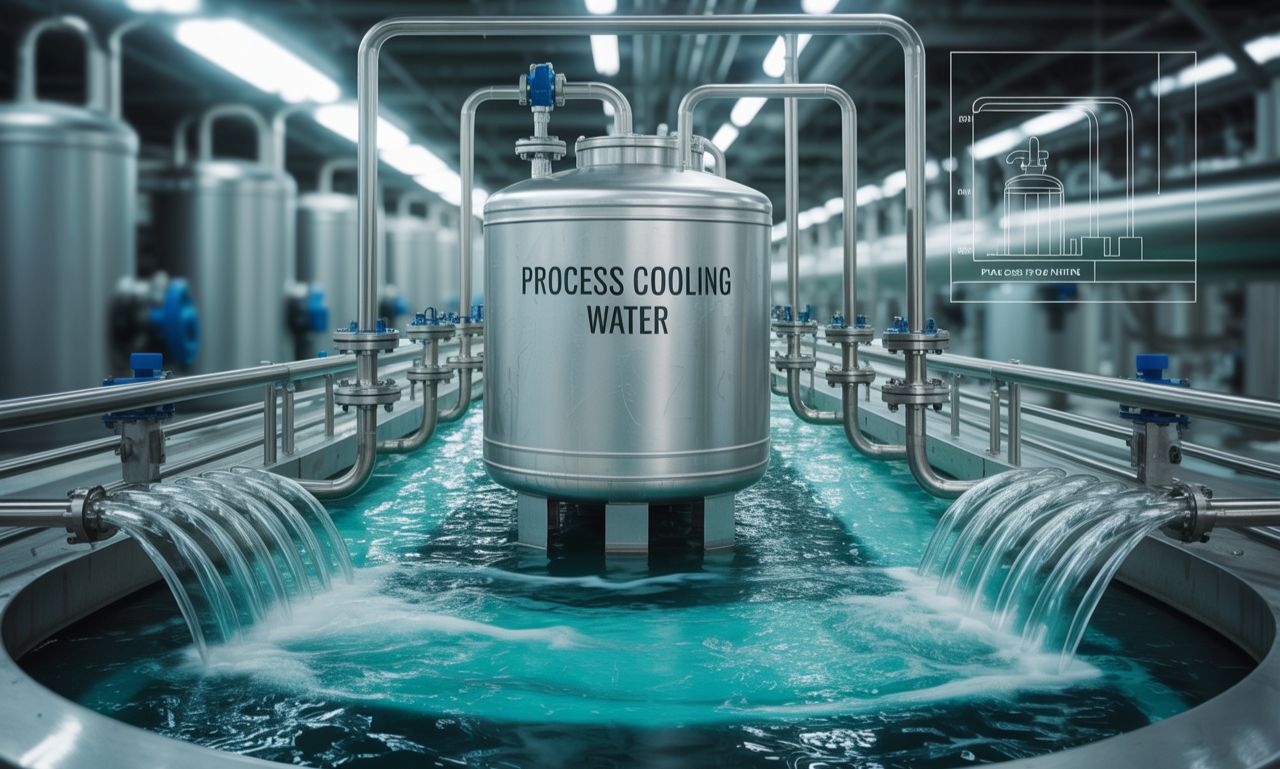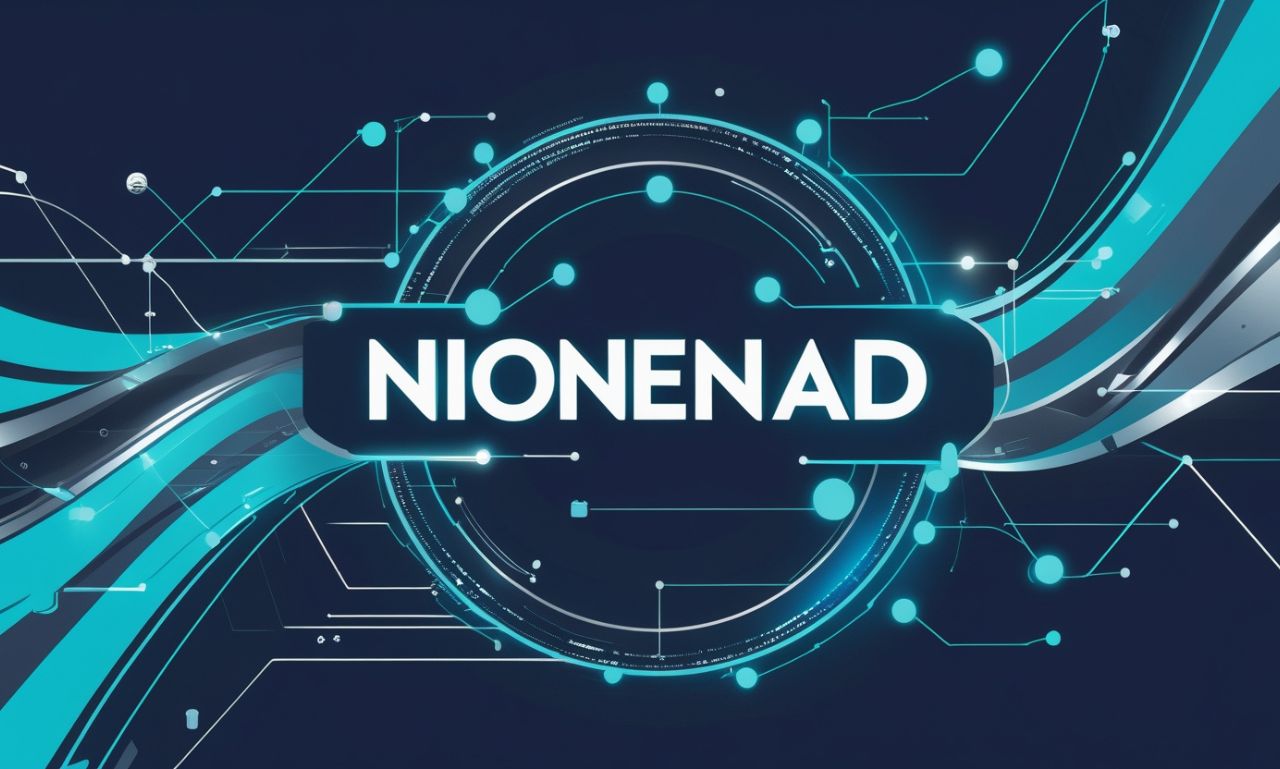If you’re an engineer or plant manager, you already know how critical cooling systems are to industrial processes. They play a crucial role in maintaining equipment reliability and operational efficiency. But when we dig deeper into process cooling water (PCW), its design, and its applications, we uncover the tremendous opportunities for improving efficiency and sustainability in industrial plants.
This blog combines everything I’ve learned about process cooling water over the years so that you, too, can optimize your cooling systems for peak performance and a greener footprint.
What is Process Cooling Water?
Process cooling water (PCW) is the lifeline of many industrial operations. It’s the medium that keeps machinery running at optimal temperatures by efficiently transferring and removing heat from industrial processes. Applications range from power plants and petroleum refineries to steel manufacturing and chemical processing plants.
The typical PCW cycle is straightforward:
- Heat transfer from equipment to the cooling medium.
- Heat removal via cooling systems.
- Recycling cooled water back into the process.
To compensate for water losses due to evaporation or leaks, makeup water is added to the system. This is critical for maintaining system efficiency and preventing issues such as corrosion and fouling.
This cycle, when optimized, isn’t just about keeping machines cool—it’s vital for energy efficiency and operational sustainability.
How Does a Process Cooling Water System Work?
To truly understand PCW systems, I’ve found it’s helpful to break them down into three core functions. These systems are designed with specific purposes, and by diving deeper into each function, we can see how they work together seamlessly.
Through research and practical examples, it becomes clear that understanding these core elements is key to fully grasping how PCW systems operate and deliver value. This is especially true when the system is implemented through a reliable partner like Industrial Cooling Solution. Their approach combines expert system design with operational excellence.
1. Heat Transfer: Keep Equipment Cool and Running Smoothly
The primary purpose of cooling water systems is to absorb heat generated by processes or machinery. Warm water carries this excess heat away from the equipment, traveling to a heat exchanger where it transfers that heat to cooled water or air cooling.
Maximizing turbulent flow in the heat exchanger is critical for enhancing heat transfer efficiency, as it reduces the thickness of the laminar sub-layer formed at the material surface, thereby improving heat transfer rates and overall system performance. This setup prevents overheating, ensuring smooth and longer equipment life.
2. Cooling: Evaporate Heat, Maximize Efficiency
Once the heat is transferred, the heated water arrives at the cooling tower, where cooling takes place. Cooling towers use evaporation as a mechanism to dissipate heat into the air. Some operations use chillers to lower water temperatures further, especially when temperatures between 45°F and 60°F are required.
Managing high temperatures is crucial in various industrial processes, as excessive heat can impact equipment performance and accuracy. Process cooling systems are essential to mitigate these risks, ensuring optimal operation and product quality.
3. Recycle for Sustainability and Savings
Finally, the cooled water is pumped back into the system, ready to begin its next cooling cycle. This continuous recycling makes PCW systems both efficient and sustainable, particularly when using closed-loop configurations that minimize environmental impact.
Key Components in Cooling Systems
Now that we understand the basics of cooling systems, let’s take a closer look at the key components that make them work.
Heat Exchanger Design
Heat exchangers are vital for transferring heat effectively from the process fluid to the cooling medium. Whether it’s a shell-and-tube design, a plate-and-frame unit, or spiral exchangers, the design features depend on factors like fluid properties, operating conditions, and heat loads. Material choices, such as stainless steel for corrosion resistance or copper for efficient heat transfer, are also key considerations.
Cooling Towers
Cooling towers are arguably the most visible aspect of PCW systems. They handle massive heat loads by leveraging evaporation to cool water. Cooling towers vary in design, from natural draft to mechanical draft to hybrid towers, depending on the requirements of the facility. However, they require regular maintenance, such as:
- Regular descaling is essential to prevent mineral buildup that can affect performance and efficiency.
- Implementing proper bacterial control measures ensures hygiene and avoids contamination.
- Routine inspections help identify potential issues early, reducing downtime and repair costs.
Proper maintenance not only ensures optimal performance but also leads to less maintenance overall, reducing operational costs and improving efficiency.
Chilled Water Systems
Chilled water systems are the perfect solution for applications that need precise temperature control, like pharmaceuticals or data centers. Using advanced refrigeration technology, these systems cool water to exact temperatures, ensuring reliable performance for sensitive operations.
Maintaining a specific temperature is crucial in various industrial processes, such as thermoforming, extrusion, and molding within the plastics industry. Chilled water systems are engineered to achieve and sustain these specific temperature requirements, ensuring efficiency and quality.
Heat Transfer Fundamentals
Heat transfer is a fundamental concept in cooling systems, enabling the removal of heat from a process fluid to a cooling medium. The process relies on three primary modes of heat transfer: conduction, convection, and radiation.
Key considerations include:
- The three modes of heat transfer: conduction, convection, and radiation.
- The role of the heat transfer coefficient, influenced by fluid velocity, temperature, and surface roughness.
- Critical design factors such as heat load, ambient conditions, and fluid properties.
Types of Cooling Water Systems
Choosing the right cooling water system for your setup is essential for maximizing efficiency and performance. The right system can save you energy, reduce costs, and improve overall operations. Here’s a quick breakdown to help you make an informed decision:
Selecting the right method for specific applications is crucial to achieve optimal performance. Different methods, such as specific filtration and testing methods, can enhance efficiency and prolong equipment lifespan.
1. Open Cooling Systems
Also known as once-through cooling systems, open recirculating cooling systems continuously pump water from a source such as a river or lake and pass it through the heat exchanger before returning it to the source.
- Water exchanges heat with air through evaporation.
- Common in large plants.
- Requires water replenishment due to evaporation losses.
2. Closed Cooling Systems
Closed cooling systems, also known as closed circuit cooling systems, do not require any water replenishment as they recycle the same water through the process. These systems use a cooling tower to remove heat from the recirculating water. The cooled water then flows back to the heat exchanger to absorb more process heat.
- Recirculate the same water for reuse.
- Recirculates water in a sealed loop.
- Minimal contamination risk, making it low-maintenance.
3. Once-Through Cooling Systems
Once-through cooling systems, also known as open circuit cooling systems, are the opposite of closed cooling systems. These systems use fresh water from a natural source (such as a lake or river) to cool down the process. The water is pumped into a heat exchanger, where it absorbs heat and is then discharged back into the environment.
- Uses fresh water for each cycle.
- Water passes through the system only once before being discharged.
- Lower operational cost but higher environmental impact due to downstream discharge.
4. Chilled Water Systems
A chilled water system is a type of cooling system that uses chilled water to absorb heat from a building or process. The chilled water is usually produced by a chiller, which is a refrigeration machine that removes heat from the water through compression and evaporation cycles.
The chilled water is then distributed through pipes to air handling units (AHUs) or fan coil units (FCUs) to cool down the surrounding air. This cooled air is then circulated throughout the building, providing efficient cooling for large commercial or industrial spaces.
Sustainability and Efficiency in PCW Systems
Sustainability in PCW systems is no longer just a preference; it’s becoming a necessity. Enterprises today are under pressure to both lower costs and reduce their environmental footprint.
Here’s how you can enhance efficiency and sustainability in your cooling systems:
- Use closed-loop systems to reduce water waste and minimize contamination risks.
- Treat water with eco-friendly methods to reduce the need for heavy chemicals.
- Employ smart sensors and IoT for real-time monitoring and system optimization.
- Integrate reclaimed/recycled water into non-critical processes to save resources.
Combining these best practices can not only reduce operational costs but also align your business with modern sustainability goals.
Applications of Process Cooling Water
PCW systems are incredibly versatile and play a vital role in so many industries I’ve come across. From manufacturing and logistics to healthcare and retail, these systems help streamline processes and improve efficiency in ways that are hard to ignore.
Some examples include automated inventory management, patient record systems, or even optimizing supply chains. Their impact is everywhere!
- Manufacturing (steel, plastics, and glass production).
- Data Centers, where high loads from servers require precise cooling.
- Pharmaceuticals to maintain sterile environments.
- Food and Beverage to ensure quality and safety.
- Chemical Plants and Power Generation Facilities for reliable, high-load heat dissipation.
Looking Ahead: Future Trends in Cooling Technology
Innovation is transforming the cooling water industry. From advanced materials like nanomaterials to cutting-edge AI-powered control systems, here are a few exciting developments:
- AI and IoT integration for predictive maintenance and precise system control.
- Renewable-powered cooling systems that lower environmental footprint.
- Novel cooling technologies, such as magnetic or thermoelectric cooling, offer potential breakthroughs for efficiency and cost savings.
- Smart sensors and monitoring systems for real-time data on system performance.
- Nanotechnology to improve heat transfer and corrosion resistance in cooling equipment.
Skid mounted systems play a crucial role in ensuring the stable operation of water-cooled machines by efficiently circulating water at specific temperatures and pressures. These systems often include filtration and heat exchanger features that enhance their functionality.
Conclusion
Process cooling water (PCW) does more than prevent overheating, it’s the backbone of operational reliability, efficiency, and sustainability. In industries like manufacturing, having the right PCW system and maintenance practices ensures smoother operations, minimizes downtime, and reduces environmental impacts.
Investing in PCW solutions isn’t just a cost—it’s a long-term investment in efficiency, sustainability, and the future success of your operations. By prioritizing the right strategies, you’re not only protecting your equipment but also boosting productivity and making a positive environmental impact.
FAQ
Q: What is PCW?
A: PCW stands for Process Cooling Water. It is a vital component in many industrial processes, used to remove excess heat and maintain the correct operating temperature of equipment.
Q: Why is proper maintenance of PCW systems important?
A: Proper maintenance of PCW systems ensures operational reliability, improves efficiency, and reduces environmental impacts. On the other hand, neglecting maintenance can lead to costly breakdowns and downtime.
Q: How often should I check my PCW system?
A: It is recommended to check your process cooling systems at least once a month for any signs of leaks or damage. Annual inspections of industrial processes are also recommended to identify any potential issues before they become more serious problems.
Q: How does maintaining my PCW system benefit the environment?
A: Properly maintained PCW systems use less energy and produce fewer emissions, resulting in a reduced carbon footprint. Neglected systems may develop leaks











